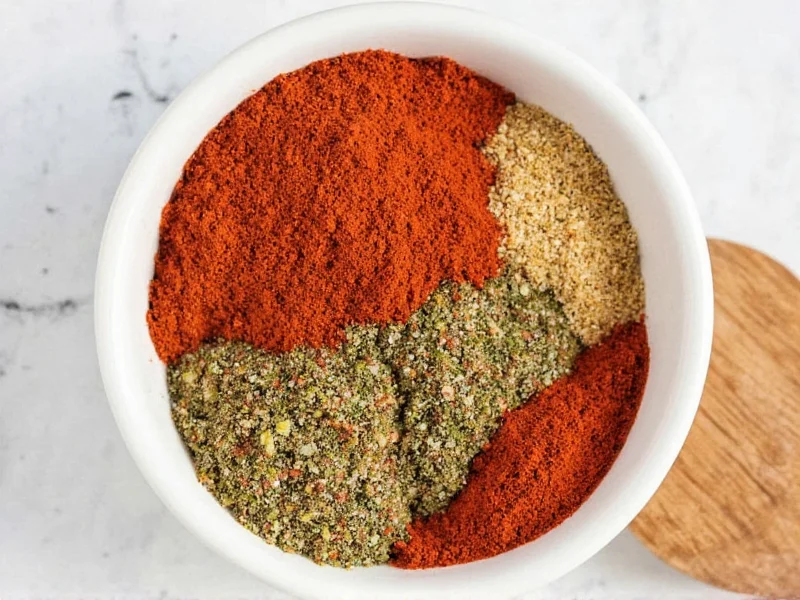If you're standing in your kitchen wondering what to use instead of italian seasoning, you're not alone. Many home cooks face this dilemma when a recipe calls for this popular herb blend but their spice cabinet comes up short. The good news is that creating an effective italian seasoning alternative is simpler than you might think, and you likely already have suitable substitutes in your pantry.
Understanding Italian Seasoning Composition
Before exploring alternatives, it's essential to understand what makes up authentic italian seasoning. This versatile herb blend typically contains five core ingredients in varying proportions:
| Core Herb | Typical Percentage | Flavor Profile |
|---|---|---|
| Oregano | 30-40% | Earthy, slightly bitter, robust |
| Basil | 20-30% | Sweet, slightly peppery, aromatic |
| Thyme | 15-25% | Subtle lemon notes, earthy |
| Rosemary | 10-20% | Pine-like, woody, strong |
| Marjoram | 5-15% | Milder than oregano, sweet floral notes |
Commercial blends often include additional ingredients like garlic powder, onion powder, or red pepper flakes. Knowing this composition helps you create effective homemade italian seasoning substitute options tailored to your specific recipe needs.
Best Single-Herb Alternatives
When you need a quick solution and lack multiple herbs, certain single spices work better than others as an italian herb blend alternative:
- Oregano - The most dominant flavor in italian seasoning; use 1:1 replacement but expect a more intense, earthy profile
- Herbes de Provence - A French blend with similar herbs (lavender, thyme, rosemary) but different proportions; works well in most savory dishes
- Poultry seasoning - Contains similar herbs plus sage; best for meat dishes but not ideal for tomato-based recipes
Creating Your Own Italian Seasoning Blend
For the most authentic italian seasoning alternative from scratch, combine these dried herbs in the following proportions:
- 2 parts dried oregano
- 2 parts dried basil
- 1 part dried thyme
- 1 part dried rosemary (finely crushed)
- 1 part dried marjoram
Mix thoroughly and store in an airtight container away from light. This homemade italian seasoning recipe yields approximately ¼ cup of blend. For enhanced flavor, add ½ teaspoon of garlic powder and ¼ teaspoon of onion powder to the mix.
Recipe-Specific Substitution Guide
Not all dishes require the same herb balance. Consider these tailored approaches for what to use instead of italian seasoning in specific recipes:
- Tomato-based sauces - Increase oregano and basil (3:2 ratio), reduce rosemary
- Meat marinades - Boost rosemary and thyme, add black pepper
- Vegetable dishes - Emphasize marjoram and thyme, reduce oregano
- Pizza seasoning - Add red pepper flakes and garlic powder to your blend
Storage and Freshness Tips
Dried herbs lose potency over time. For optimal flavor in your italian seasoning substitute, follow these storage guidelines:
- Store in dark glass containers away from heat and light
- Label with creation date - homemade blends stay fresh for 6-8 months
- Refresh older blends with a pinch of fresh herbs when possible
- Never store above the stove where heat degrades quality
Common Substitution Mistakes to Avoid
When creating an alternative for italian seasoning in cooking, watch out for these pitfalls:
- Using fresh herbs in equal proportions to dried (use 3x the amount of fresh)
- Overusing rosemary, which can dominate other flavors
- Adding salt to your blend (keep it salt-free for recipe flexibility)
- Using old, stale spices that lack flavor intensity
Remember that the best italian seasoning alternative for specific dishes depends on what you're cooking. A pasta sauce needs different herb emphasis than a chicken marinade. Trust your palate and adjust proportions to match your recipe's requirements.











 浙公网安备
33010002000092号
浙公网安备
33010002000092号 浙B2-20120091-4
浙B2-20120091-4